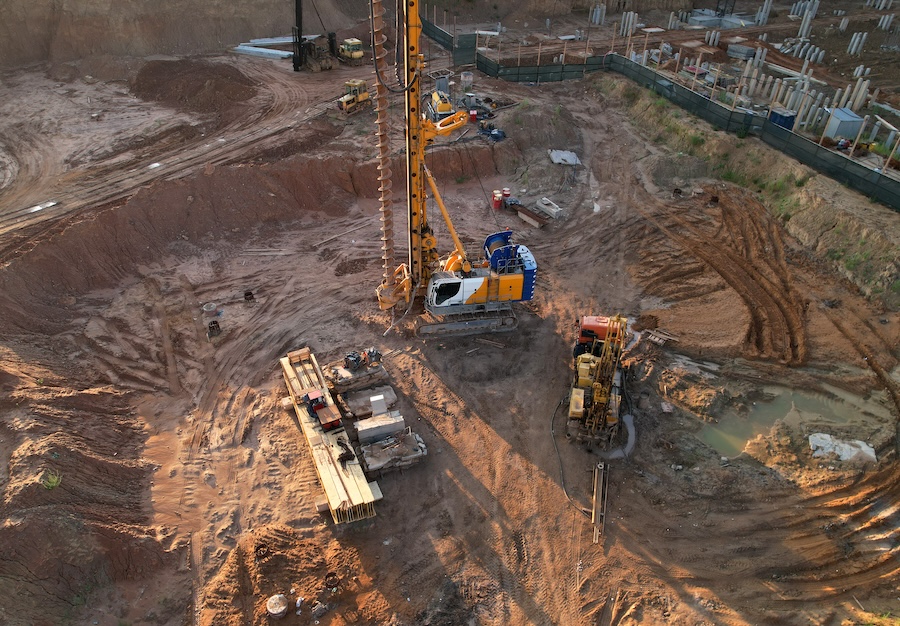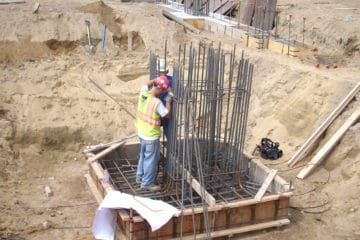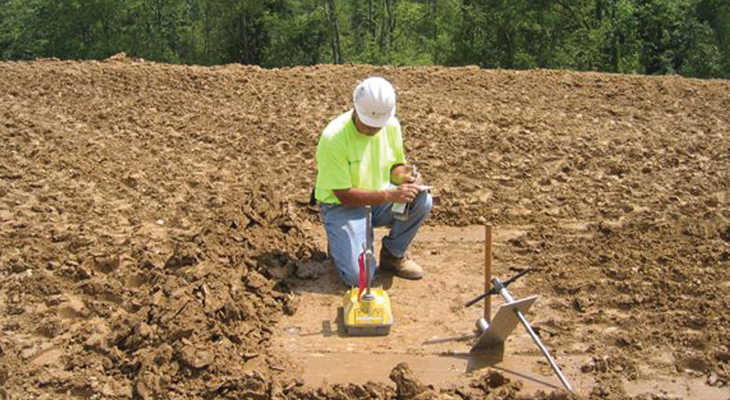Recognizing the Essential Role of the Geotechnical Industry in Modern Building Projects and Infrastructure Growth
The geotechnical industry is a cornerstone of modern construction and facilities growth, offering vital understandings into dirt habits that directly influence project results. Via advanced soil evaluations and innovative engineering options, geotechnical specialists not just make sure structural stability yet also address sustainability concerns amid developing environmental requirements. As facilities needs grow and new difficulties emerge, the importance of this area comes to be progressively noticeable. What ramifications might these developments have for future tasks and the overall security of our developed setting?
Significance of Dirt Evaluation
Soil assessment plays a crucial function in the geotechnical industry, functioning as the structure for notified decision-making in building projects. Exact soil assessment is essential for determining the viability of a site for various sorts of frameworks, consisting of household homes, business buildings, and bridges. By evaluating soil composition, thickness, moisture, and strength web content, engineers can anticipate possible challenges and alleviate dangers associated with ground instability, erosion, and negotiation.
The assessment process usually involves a collection of examinations and monitorings that give vital info concerning the subsurface problems. This data notifies the layout and building and construction procedures, guaranteeing that structures are built on solid ground with ample assistance. Understanding the soil profile allows engineers to choose suitable building approaches and materials, maximizing source use and decreasing expenses.
In enhancement to making certain architectural integrity, soil assessment adds to environmental sustainability. By determining possible contamination or adverse results on bordering ecosystems, designers can carry out strategies to shield these natural sources. On the whole, complete soil evaluation is essential in the geotechnical field, underpinning the safety, performance, and ecological responsibility of construction jobs.
Trick Geotechnical Strategies
A selection of crucial geotechnical methods are used to analyze and boost the stability and efficiency of building and construction sites. One foundational technique is dirt sampling and screening, which permits engineers to identify the chemical and physical properties of the ground. This details is crucial for making notified choices relating to foundation layout and construction techniques.
One more important technique is website characterization, which includes the comprehensive evaluation of dirt and rock conditions with techniques such as borehole exploration and in-situ screening. Methods like Criterion Penetration Tests (SPT) and Cone Infiltration Examinations (CPT) provide useful data on soil stamina and stratigraphy.
Ground renovation techniques, such as dirt stabilization and grouting, are additionally crucial in improving the load-bearing capability of weak dirts. These approaches can mitigate settlement and improve total site conditions.
Additionally, incline stability analysis is critical for identifying potential landslide threats and making certain the security of excavations. This evaluation frequently uses mathematical modeling and limit balance methods to anticipate dirt actions under various problems.
Integrating these geotechnical techniques right into building planning not just optimizes job results however likewise makes sure the long-term sustainability of infrastructure growth.
Effect on Building Safety

Moreover, tailings engineer effective geotechnical design involves applying reduction strategies for identified risks. This may consist of dirt stablizing methods, maintaining structures, or drainage systems to reduce hydrostatic stress. By dealing with these aspects, building and construction groups can minimize the likelihood of crashes and improve employee safety and security.
Furthermore, continuous tracking of site conditions is critical during building and construction. Geotechnical instruments can provide real-time information relating to ground activity and stability, enabling timely treatments when required.
Essentially, the geotechnical sector plays a crucial function in safeguarding building and construction jobs. By prioritizing ground integrity and using extensive assessment techniques, the geotechnical industry not only shields the workforce but additionally adds to the longevity and reliability of constructed framework.
Sustainability in Geotechnical Practices

Additionally, geotechnical designers are currently utilizing advanced innovations, such as geosynthetics, which enhance soil stability while lowering the volume of product called for. This not just saves resources however also results in much less waste generation (engineer of record). The combination of lasting style concepts into geotechnical design urges making use of sustainable energy sources in building procedures, additionally minimizing carbon discharges
Furthermore, thorough site assessments are important for recognizing prospective ecological impacts before construction starts. By carrying out these analyses, geotechnical specialists can create approaches that minimize negative impacts, making certain compliance with ecological policies. Overall, the focus on sustainability within geotechnical techniques not just adds to the long life and strength of facilities yet likewise promotes a responsible method to land and resource management. This commitment is essential for promoting lasting growth in the contemporary building landscape.
Future Trends in Geotechnical Design
Advancement is driving the future of geotechnical design, as emerging technologies and approaches improve the sector. The integration of innovative information analytics and expert system is set to change site investigation and danger analysis, enabling engineers to make more informed choices based upon real-time data. The usage of geosynthetic materials is getting traction, supplying sustainable options that enhance soil security and minimize environmental effect - engineer of record.
One more significant fad is the adoption of automated and robot systems for surveillance and construction procedures. These modern technologies not only improve precision yet likewise enhance safety by minimizing human involvement in dangerous atmospheres. In addition, the application of Building Information Modeling (BIM) in geotechnical style promotes enhanced cooperation among stakeholders, maximizing job delivery and decreasing prices.
As climate modification postures new difficulties, the market is significantly concentrating on durability and adaptability in style methods, making certain framework can endure severe weather condition occasions. Lastly, the recurring pattern towards sustainability will certainly drive development in eco-friendly products and techniques, aligning geotechnical engineering with broader environmental goals. Jointly, these trends will shape a more effective, sustainable, and resistant geotechnical landscape for future jobs.
Conclusion

The geotechnical industry is a foundation of contemporary construction and infrastructure growth, offering vital insights right into soil habits that directly influence job results. tailings engineer.Dirt assessment plays a crucial duty in the geotechnical industry, offering as the foundation for informed decision-making in building and construction tasks. On the whole, extensive soil assessment is essential in the geotechnical area, underpinning the security, performance, and environmental responsibility of construction tasks
Construction safety is substantially affected by geotechnical practices, as the security and integrity of the ground directly influence the total safety and security of a construction site.In conclusion, the geotechnical sector is indispensable in modern-day building and construction and framework advancement, providing crucial assessments that ensure structural honesty and safety and security.
Comments on “Engineer of Record: What You Required to Know About Their Duties and Impact”